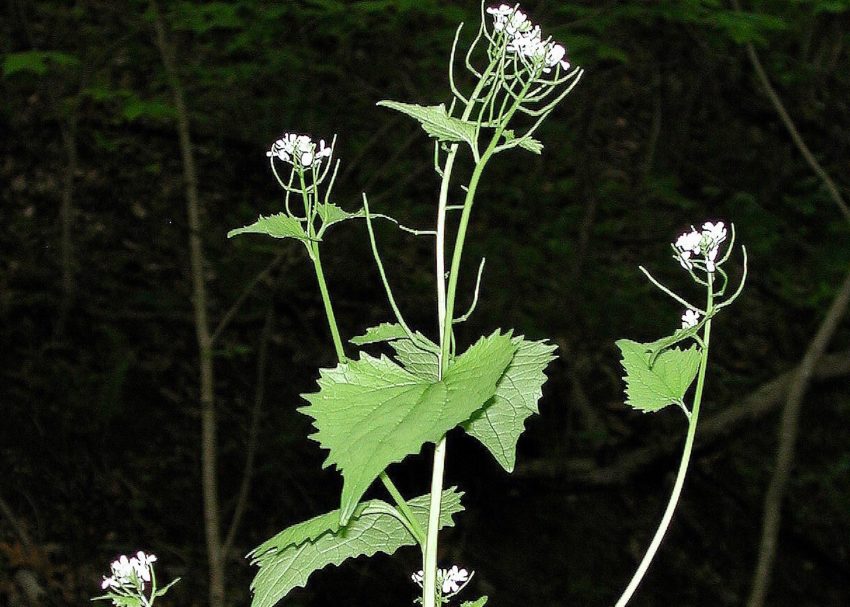Spring is popping up all over, from spring peepers and songbirds to bluebells and buds on trees. Unfortunately, the season also means the return of scores of non-native invasive plants that invade our woodlands and crowd out native species. Combating these “super weeds” is key to keeping our wildlands close to their natural states and preserving healthy habitats.
One of these invasive plants is garlic mustard. A biennial, it grows its first year as a low rosette of leaves, and in its second year, sends up a flowering spike, sets seed, and dies.
The seeds are small and mostly drop close to the plant. After falling to the ground, they are sometimes washed downhill in heavy rain, or hitchhike in mud stuck to shoes, animal feet, or vehicle tires.
In natural areas, garlic mustard usually first appears along trails, roads, and waterways, and disperses gradually downhill. The key to preventing its spread is finding newly established patches while still small. The seeds can survive 10 years in the soil, so complete eradication requires repeated annual monitoring of areas where it was pulled out.
Want to help control garlic mustard? Here are some tips:
The plants usually pull out easily if grasped at the base and pulled with steady tension. Don’t yank quickly, as the roots tend to break, leaving part in the ground to re-sprout.
The ideal time to pull garlic mustard is when plants have begun flowering, making them easy to spot, but when the pod-like fruits (called siliques) have not yet formed or are still small. In our area, that stage in usually in mid-April. It is worthwhile to check the area again in early to mid-May to look for plants that you missed the first time.
Plants pulled before they develop fruits may be composted or hung over branches to dry. However, once the fruits are more than a quarter-inch long, they can continue to develop, drawing on moisture in the leaves, and dropping seeds even after the plant is uprooted. To prevent this, plants with developing fruits can be bagged and disposed. Or the flowering / fruiting tops can be separated from the rest of the uprooted plant, and left to dry out and die before seeds mature.
— Phil Cantino

